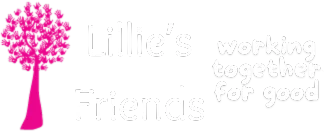The treatment of childhood cancer typically involves a combination of therapies tailored to the specific type of cancer, its stage, and the individual child’s health.
The main types of treatment for childhood cancer include:
Surgery:
Surgery involves the removal of cancerous tissue and, in some cases, nearby lymph nodes. It’s often used to diagnose, stage, and treat various types of childhood cancer. Depending on the tumor’s location and size, surgical procedures can range from relatively minor to more extensive operations.
Chemotherapy:
In chemotherapy, strong drugs are used to kill cancer cells or slow their growth. It’s a systemic treatment that affects the entire body, and it’s often used to treat cancers that have spread or those that can’t be easily removed through surgery. Chemotherapy may be administered orally, intravenously, or through other methods.
Radiation treatment:
High-energy rays are used in radiation treatment to find and kill cancer cells. It’s commonly used in combination with other treatments. Radiation is often localized to the area of the tumor and can be effective for treating certain types of childhood cancer, such as brain tumors and solid tumors.
Targeted Therapy:
Targeted therapies are drugs that specifically target certain molecules or proteins involved in the growth and spread of cancer cells. These therapies are designed to be more precise and less harmful to normal cells than traditional chemotherapy.
Immunotherapy:
Immunotherapy uses the body’s immune system to find cancer cells and kill them. This approach can be effective for certain types of childhood cancers and has shown promising results in recent years.
Stem Cell Transplantation:
Stem cell transplantation, also known as bone marrow transplantation, involves replacing damaged or cancerous bone marrow with healthy stem cells. It’s often used to treat certain types of leukemia and other blood-related cancers.
Hormone Therapy:
Hormone therapy is used for cancers that are influenced by hormones, such as certain types of brain tumors and some types of leukemia. It involves blocking or altering the body’s hormonal signals to slow or stop cancer growth.
Supportive Care:
Supportive care focuses on managing the side effects of cancer treatment and improving the overall well-being of the child. This can include pain management, anti-nausea medications, nutritional support, and psychological counseling.
Palliative Care:
Palliative care aims to improve the quality of life for children with serious illnesses, including cancer. It focuses on symptom management, pain relief, and emotional and psychosocial support for both the child and their family.
Clinical Trials:
Many childhood cancer patients are treated through clinical trials, which are research studies designed to test new treatments or approaches. Taking part in a clinical study can give you access to cutting-edge treatments that you might not be able to get any other way.
The treatment approach for childhood cancer is highly individualized, and the best course of action depends on factors such as the type of cancer, the stage of the disease, the child’s age and overall health, and the potential risks and benefits of each treatment option. Pediatric oncologists, who specialize in treating childhood cancers, work closely with families to develop a treatment plan that provides the best possible outcome while considering the child’s quality of life and long-term well-being.
CERTAINLY, I CAN PROVIDE SOME FREQUENTLY ASKED QUESTIONS (FAQS) ABOUT CHILDHOOD CANCERS:
What is childhood cancer?
Childhood cancer refers to cancer that occurs in children and adolescents. It includes various types of cancer that affect different parts of the body, such as leukemia, brain tumors, lymphomas, and solid tumors.
How common is childhood cancer?
Childhood cancer is relatively rare compared to cancer in adults. It is the cause of a small number of cancer cases. However, it remains a significant health concern due to its impact on young lives.
What kinds of cancer are most common in children?
The most common types of childhood cancer include leukemia, brain and central nervous system tumors, neuroblastoma, Wilms tumor, and lymphomas.
What are the causes of childhood cancer?
Most cancers in children are still hard to figure out. Some genetic factors, exposure to certain environmental toxins, and possibly infections may play a role in their development.
What are the symptoms and signs of cancer in kids?
Symptoms can change from one type of cancer to another. Common signs include unexplained weight loss, fatigue, persistent pain, lumps or masses, frequent headaches or vomiting (especially in the morning), and changes in vision.
How is childhood cancer diagnosed?
Diagnosis often involves a combination of physical exams, blood tests, imaging studies (like X-rays or MRI), and sometimes biopsies to examine a tissue sample under a microscope.
What is the treatment for childhood cancer?
Treatment can include chemotherapy, radiation therapy, surgery, targeted therapies, and stem cell transplants. The treatment plan depends on the type and stage of cancer.
Are there support services for families of children with cancer?
Yes, many hospitals and cancer centers provide comprehensive support services for families, including emotional support, counseling, social workers, and resources to help navigate the challenges of childhood cancer.
Is childhood cancer curable?
Many childhood cancers are treatable, and the prognosis varies depending on the type and stage of cancer. Advances in medical research and treatment have improved survival rates for several childhood cancers.
Are there organizations dedicated to childhood cancer awareness and research?
Yes, there are numerous organizations globally focused on raising awareness about childhood cancer, supporting families, and funding research. Examples include St. Jude Children’s Research Hospital, the American Childhood Cancer Organization, and the Pediatric Oncology Group of Ontario.
Can childhood cancer be prevented?
Currently, there is no surefire way to prevent childhood cancer, as its causes are not fully understood. However, maintaining a healthy lifestyle, reducing exposure to environmental toxins, and ensuring timely medical care for any concerning symptoms can contribute to overall well-being.
Remember that information may have evolved. For the most current and accurate information about childhood cancers, please consult reputable medical sources and organizations dedicated to pediatric oncology.
ADDITIONAL INFORMATION
- Childhood Cancers
- Improving outcomes of childhood cancer.
- Treatment Side Effects in childhood cancer.
- Where Children with Cancer Are Treated.
- Children with Cancer: A Guide for Parents.











